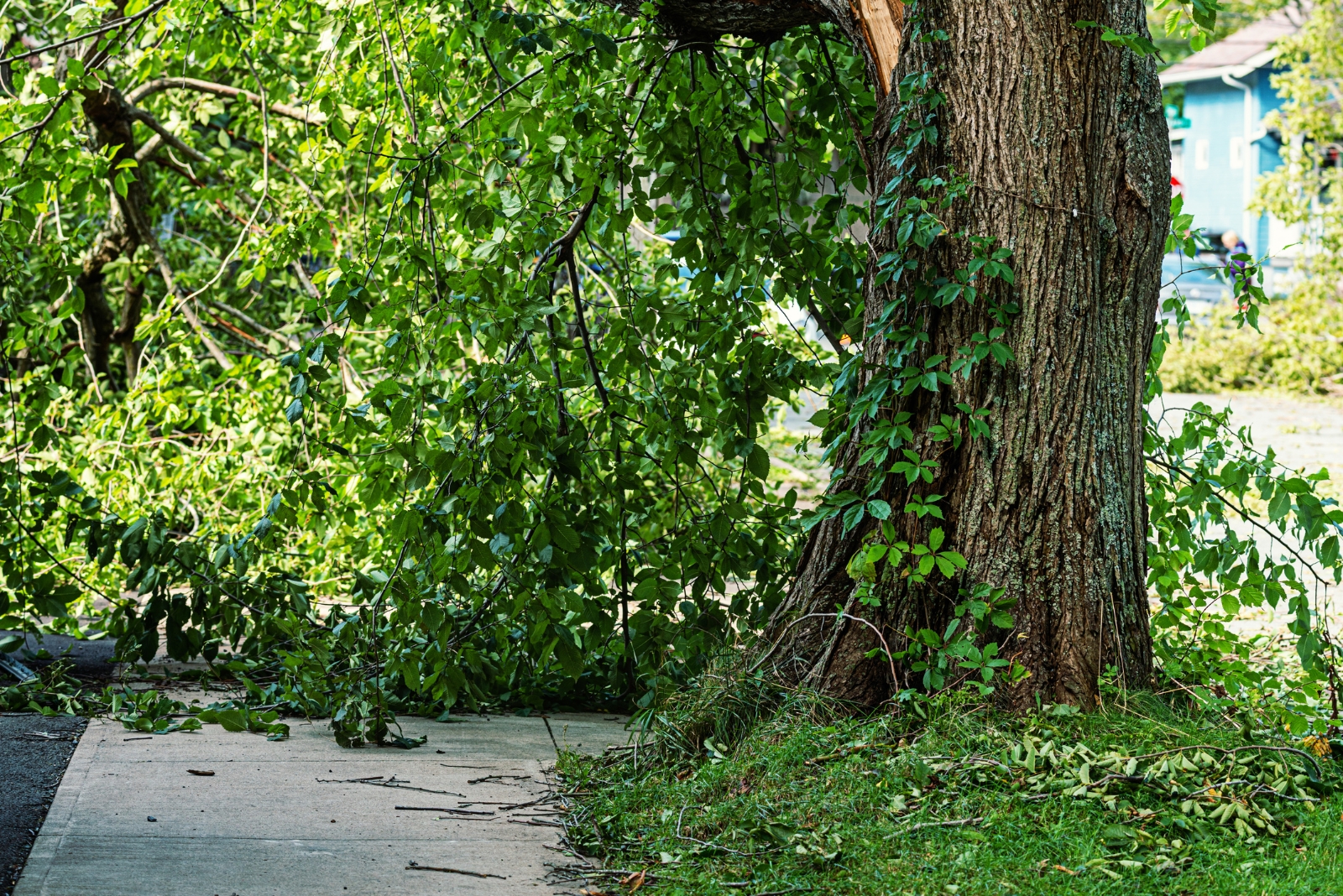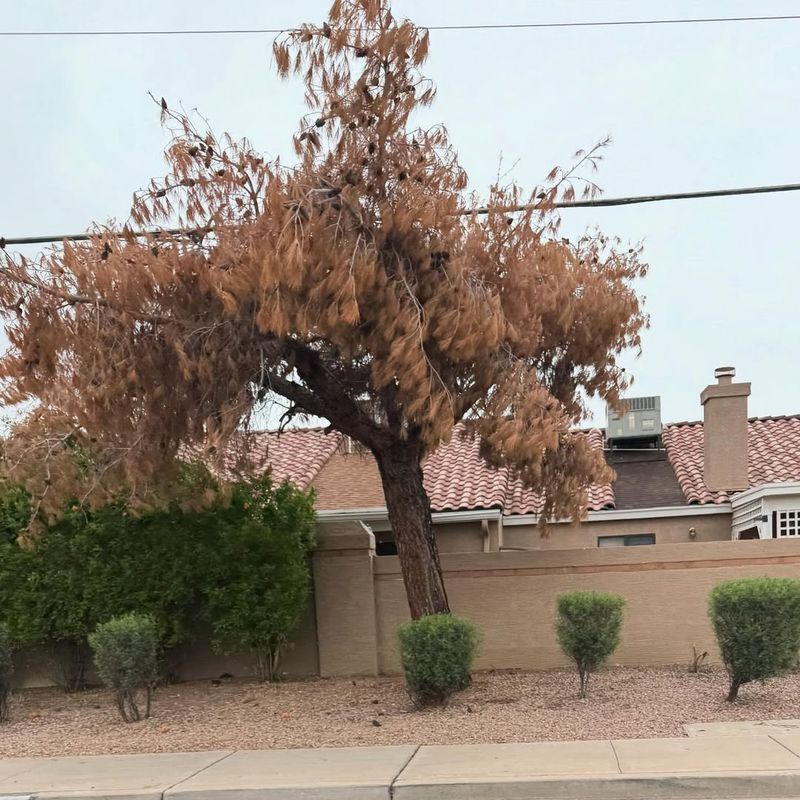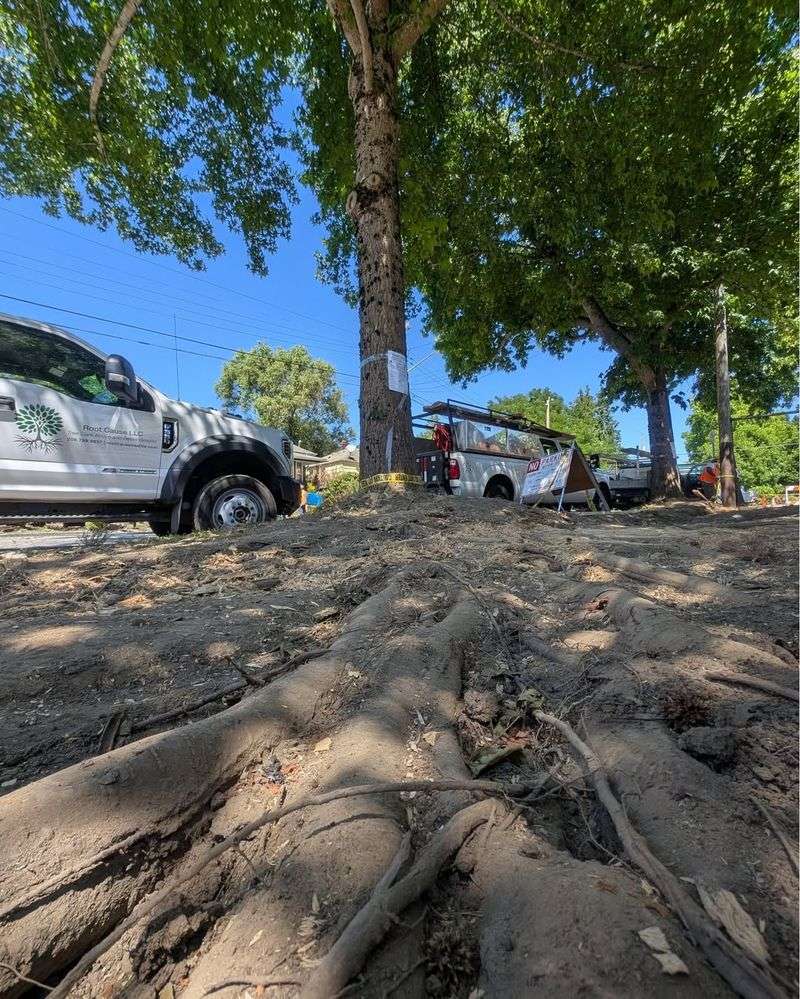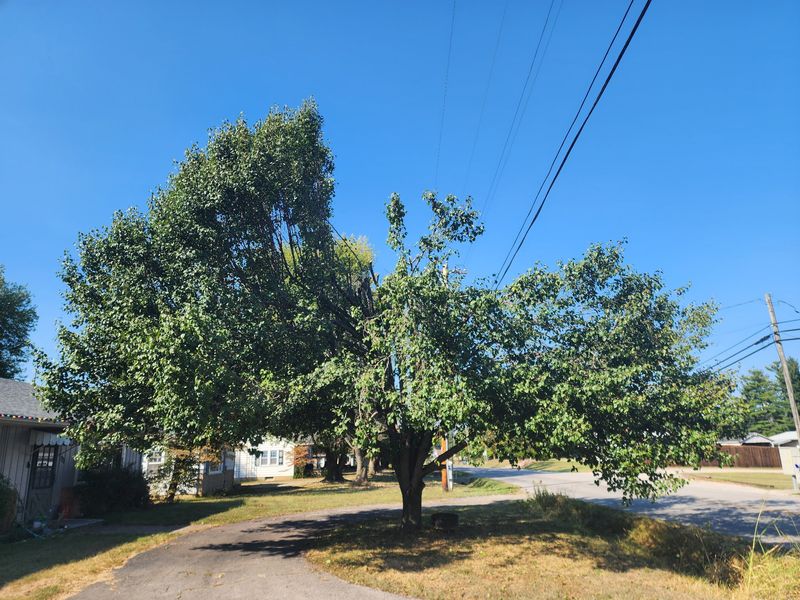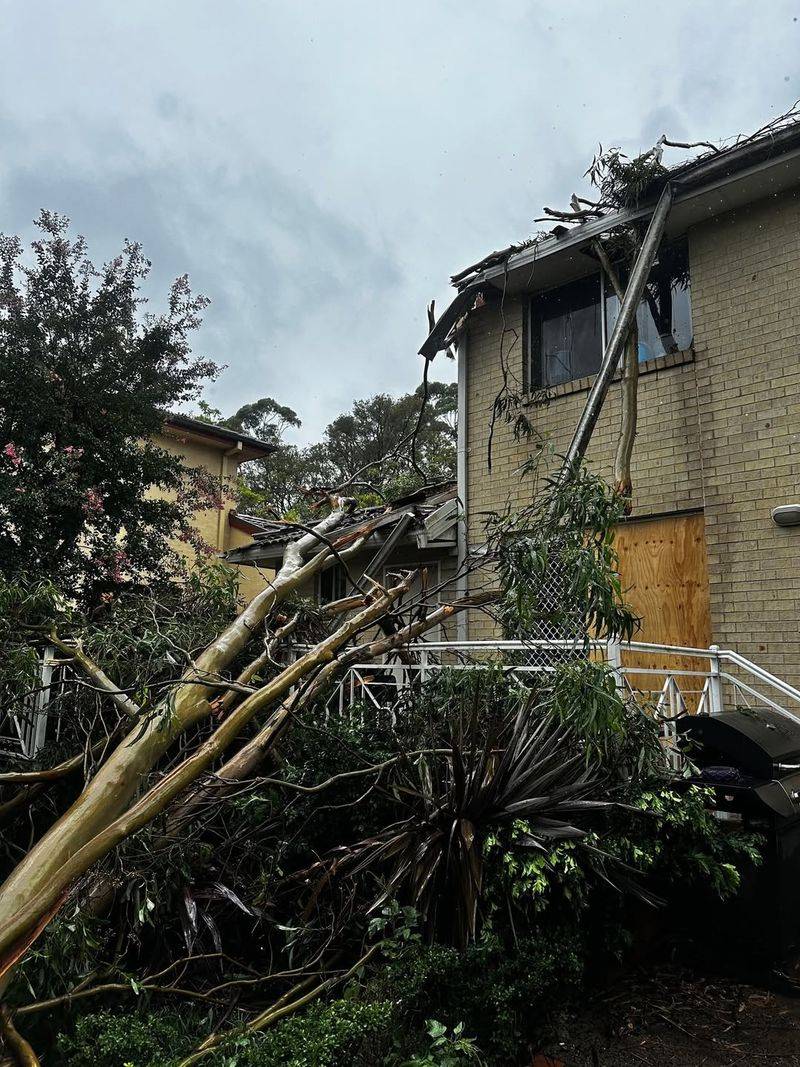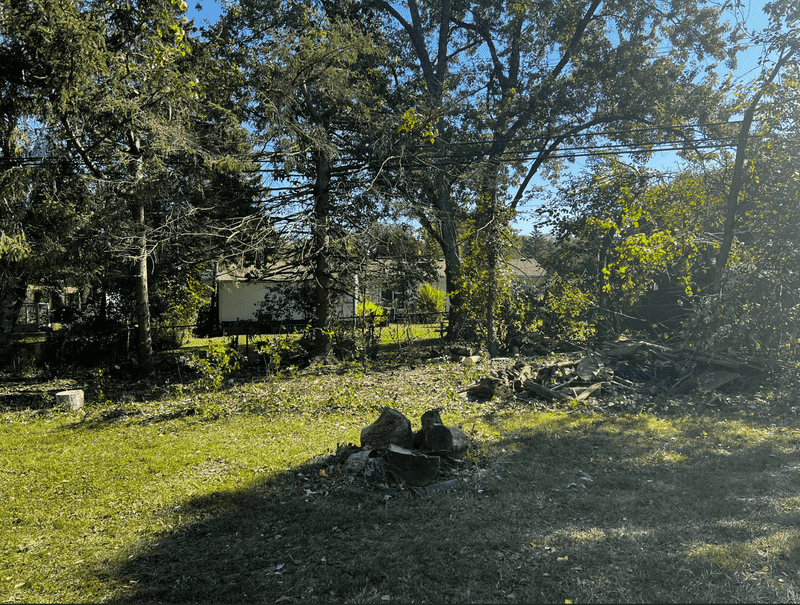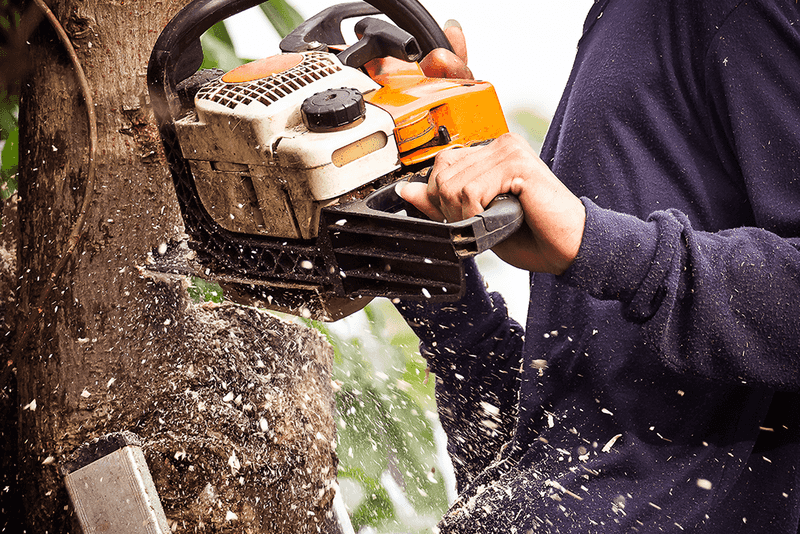Tree regulations across Virginia are tightening, and some species can now trigger fines or removal notices if they’re left unchecked.
Invasive growth, disease risks, and safety concerns are putting certain trees directly in the spotlight. These 10 trees could land homeowners in trouble if they’re not addressed.
1. Dead Or Dying Trees Near Structures
When a tree dies, it becomes a serious hazard that local authorities take very seriously. Dead trees can fall without warning, especially during storms or high winds, potentially crushing homes, cars, or power lines.
Virginia counties often require homeowners to remove dead trees within a certain timeframe once they’re reported or identified. Failure to act can result in hefty fines and liability if the tree causes damage.
Regular inspections help catch dying trees early before they become emergencies.
2. Trees With Root Damage To Sidewalks
Sidewalk damage from tree roots creates liability issues that municipalities don’t ignore. Raised concrete slabs become tripping hazards, and local governments may hold homeowners responsible for injuries that occur on public walkways adjacent to their property.
Many Virginia cities have ordinances requiring property owners to maintain safe sidewalks. If roots cause significant damage, you might receive a notice demanding tree removal or root management.
Ignoring these notices can lead to fines and forced removal at your expense.
3. Diseased Trees Threatening Neighbors
Certain tree diseases spread rapidly through neighborhoods, destroying entire populations of healthy trees. Dutch elm disease, oak wilt, and emerald ash borer infestations can devastate local ecosystems if not contained quickly.
Virginia law allows counties to mandate removal of infected trees to protect community forests. Your local government may issue a removal order if your tree tests positive for a contagious disease.
Refusing to comply can result in penalties and the cost of professional removal charged to your property taxes.
4. Trees Obstructing Traffic Visibility
Safety experts agree that clear visibility at intersections saves lives every day. Overgrown trees that hide stop signs, traffic lights, or block driver sightlines create dangerous conditions for everyone on the road.
Virginia transportation codes require property owners to maintain clear zones around roadways. If your tree obstructs visibility, the Department of Transportation or local authorities can order its removal.
Penalties for non-compliance include fines and potential liability if an accident occurs due to the obstruction.
5. Trees Too Close To Power Lines
Electricity and tree branches make a dangerous combination that utility companies monitor constantly. Branches touching power lines can cause outages, fires, and electrocution risks for anyone nearby.
Virginia utility companies have legal authority to trim or remove trees threatening their infrastructure. If a tree on your property poses an imminent risk, you may receive a mandatory removal notice from your local government or utility provider.
Homeowners who refuse may face service disconnection, fines, and emergency removal costs billed directly to them.
6. Invasive Species Like Tree Of Heaven
Not all trees deserve a place in Virginia’s landscape, especially invasive species that harm native ecosystems. Tree of Heaven spreads aggressively, releasing chemicals that kill surrounding plants and providing habitat for destructive spotted lanternflies.
Several Virginia counties have passed ordinances requiring removal of this invasive species. Property owners may receive notices demanding eradication within a specific timeframe.
Ignoring removal orders can result in escalating fines and mandatory removal by county contractors at the homeowner’s expense.
7. Leaning Trees With Structural Instability
A tree doesn’t have to be dead to be dangerous; severe leaning often signals root failure or structural weakness. Wind, saturated soil, or root disease can cause trees to lean progressively until they eventually topple over.
Building inspectors and code enforcement officers can order removal of leaning trees that threaten structures or public spaces. Virginia homeowners who ignore these orders face fines and increased liability.
Professional arborists can assess whether a leaning tree needs immediate removal or can be stabilized safely.
8. Trees Blocking Storm Water Drainage
Proper drainage protects homes and prevents flooding, but tree roots often seek out underground water sources. Roots can infiltrate storm drains, sewer lines, and drainage ditches, causing expensive backups and flooding during heavy rains.
Virginia municipalities may require tree removal when roots compromise public drainage infrastructure. Homeowners typically receive notice to resolve the problem within a specified period.
Failure to comply results in fines, emergency removal costs, and potential liability for flood damage to neighboring properties caused by the blockage.
9. Trees In Protected Utility Easements
Your property deed likely includes easements granting utility companies access to certain areas for maintenance and repairs. Planting or allowing trees to grow in these designated zones violates easement agreements and can interfere with essential services.
Utility companies and local governments can mandate removal of trees within protected easements. Virginia law typically sides with utilities in these disputes.
Homeowners who don’t comply may face removal costs, fines, and legal action to enforce easement rights granted in property deeds.
10. Trees Violating Homeowner Association Rules
Homeowner associations in Virginia have significant authority to enforce landscaping standards outlined in community covenants. Some HOAs restrict certain tree species, limit tree heights, or require approval before planting.
If your tree violates HOA rules, you may receive a formal notice demanding removal or modification. HOAs can impose fines, place liens on your property, and even force removal at your expense.
Always review your HOA’s governing documents before planting trees and address any violations promptly to avoid escalating penalties and legal complications.

